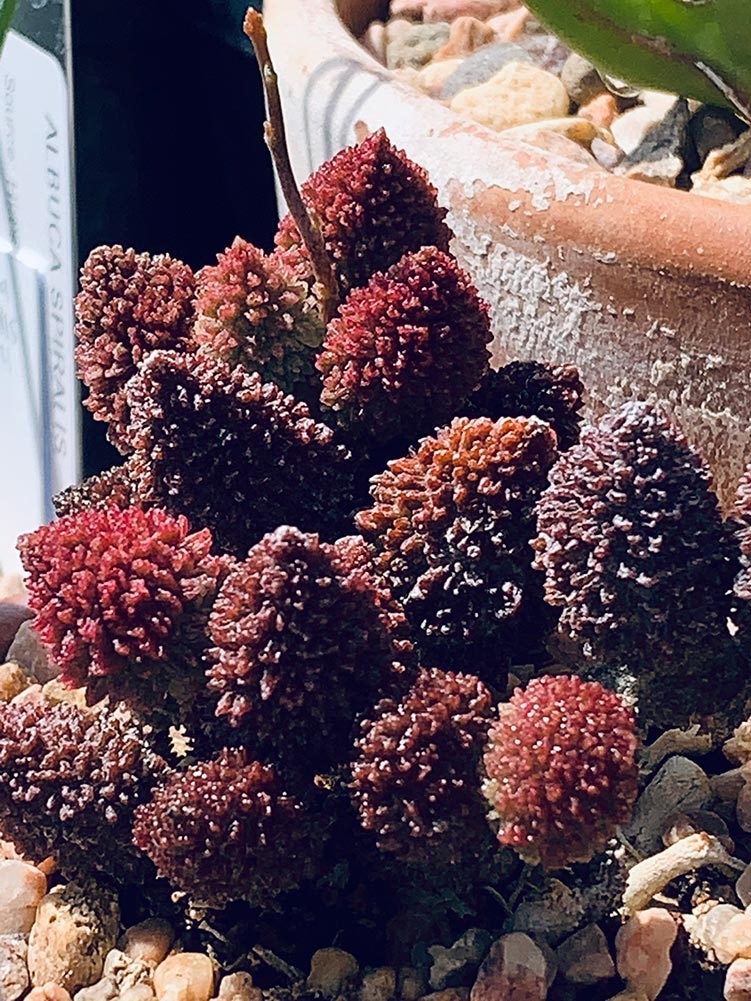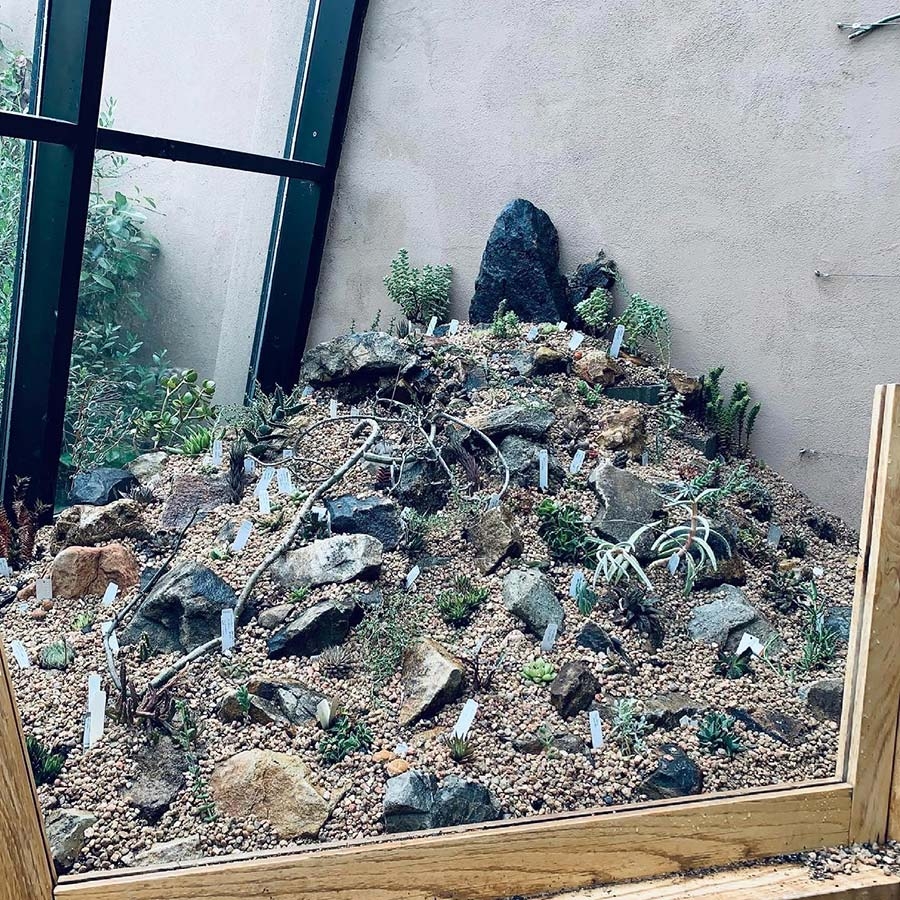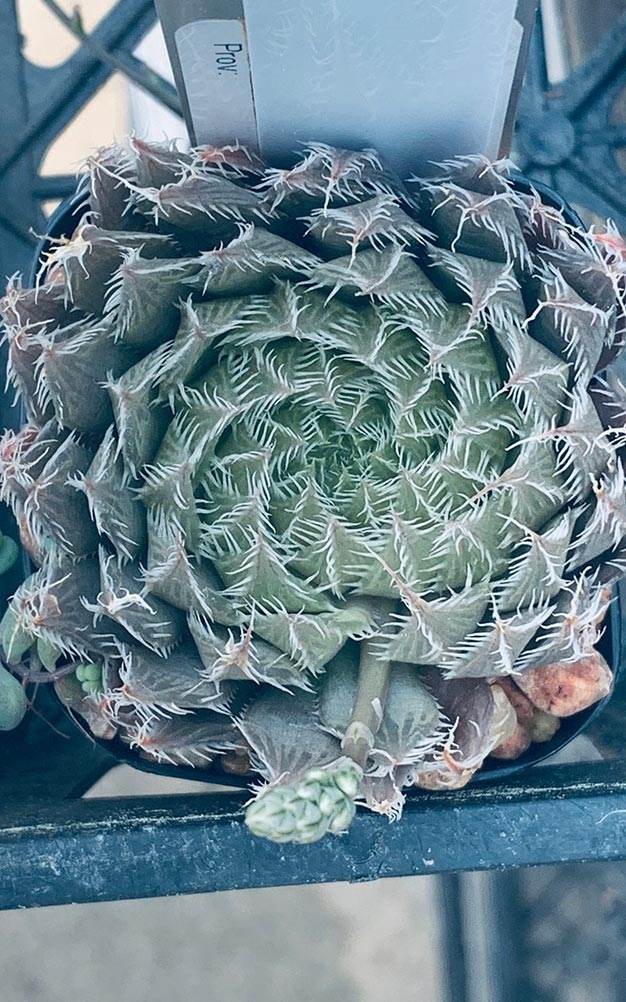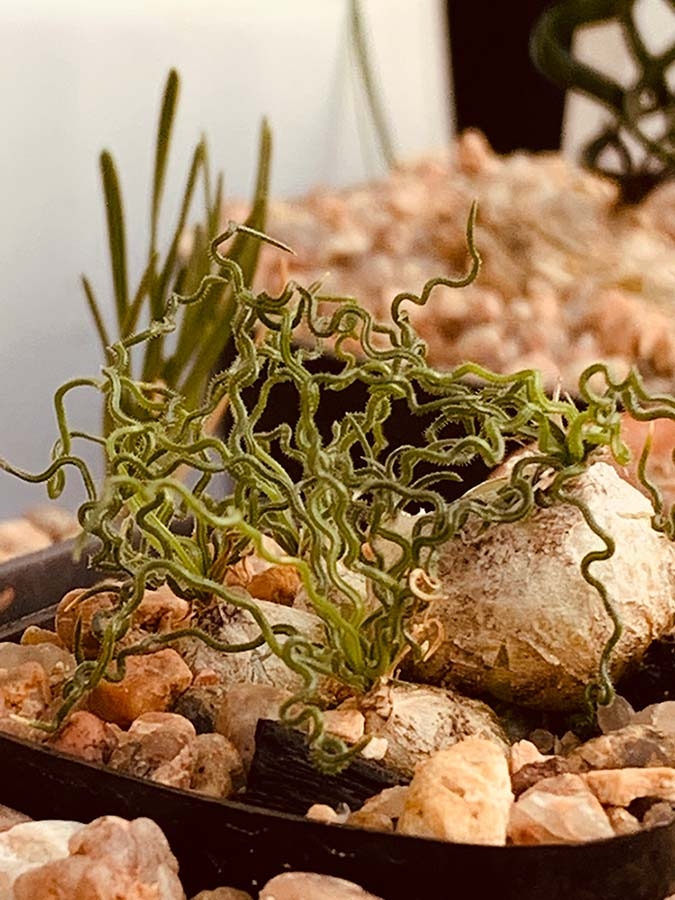January Walking Tour – Cactus and Succulent House Renovation
Greetings friends of the Gardens, I hope this article finds you well. I would like to formally invite you all to come experience the newly renovated Cactus and Succulent House located in the Rock Alpine Garden. Starting your step count from the edge of the Bonfils-Stanton Visitor Center and into the Gardens it will take about 575 steps to get to the front door of the Cactus and Succulent House. Assuming you like succulent plants as much as I do, I suggest you make no other stops on your way as you perform your own individual step counts while also anticipating the awaiting beauty.
I took over the care of this collection in October 2020 and began making preparations and plans to refresh excitement of this public display and put these plants in a more naturalistic setting. Most of the more than 215 species located here are frost tender and prefer high light. This collection highlights the range of sizes, shapes and colors available in succulent plants. One of the many reasons you should not wait to see this display is the fact that most of the species from Africa are much more active in growth and flowering during winter months while the outdoor gardens sleep.
A few of the more notable specimens include a large-branched Alluaudia procera, endemic to south Madagascar. It is a member of family Didiereaceae. Researchers have yet to figure out where this plant family originated. Alluaudia’s leaves are produced from brachyblasts, a specialized structure that mimics a cactus areole.
Another interesting specimen is the Tim Burton-like Ceropegia stapeliiformis. Undoubtedly one of the coolest flowers in existence, this sprawling, cylindrical plant is native to South Africa. Guests of the Gardens can expect to be delighted with flowers from March – October.
A plant that was not collected for use in cultivation until the early 2000s is the miniature gem Crassula ausensis ssp. titanopsis. It is native to southern Namibia and has become a staple in succulent collections.
One of the most eye-catching plants in this display is the zany, wild and strange Albuca spiralis. It is a bulb from South Africa and has many different forms in the plant trade. One can’t help but bask in the natural beauty of this species. It goes dormant in the summer months shortly after flowering, and the soil needs to be kept on the dry side.
I hope you enjoy the new cacti and succulent plant display when you visit us this year!
Gallery





Add new comment